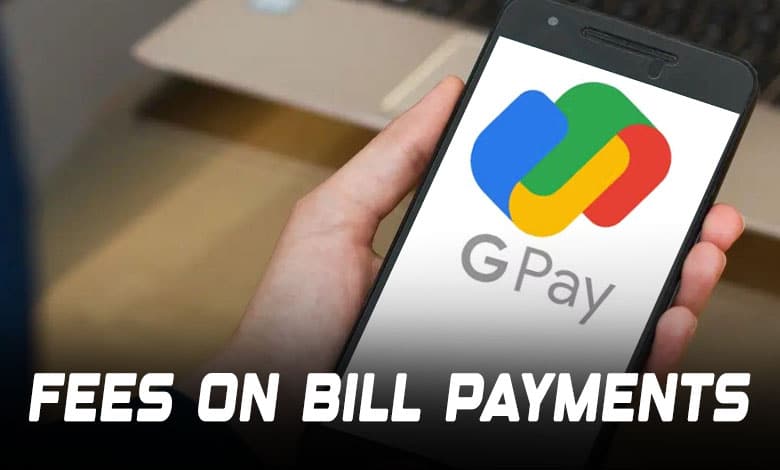Google Pay Introduces Convenience Fees for Bill Payments: What Users Need to Know
By: Javid Amin
Google Pay, one of India’s most popular Unified Payments Interface (UPI) platforms, has announced a convenience fee for certain bill payments, such as electricity, cooking gas, and other utility payments. This move signals a shift toward monetizing UPI-based transactions, as fintech companies struggle to cover processing costs and sustain long-term growth.
For users who rely heavily on Google Pay for their everyday transactions, these new fees may raise concerns. How much will it cost? Who will be affected? Are there any alternative ways to avoid these fees? This article breaks down everything you need to know about Google Pay’s new charges, how they compare to competitors, and what this means for the future of UPI transactions.
Understanding Google Pay’s New Charges
What Are the New Fees?
Google Pay has introduced a convenience fee for users making bill payments via debit and credit cards. Here’s a breakdown:
- Fee Range: 0.5% to 1% of the transaction value, plus GST.
- Applicable Transactions: Bill payments, such as electricity, water, and cooking gas.
- Who’s Affected? Users paying via debit and credit cards (UPI transactions remain unaffected for now).
Why Is Google Pay Charging a Fee?
Google Pay, like other fintech platforms, has been providing UPI services for free, absorbing processing costs to gain market share. However, with rising operational costs and increasing transaction volumes, fintech companies are now looking for ways to make their business model sustainable. Some key reasons behind this fee introduction include:
- Processing Costs: UPI transactions come with a cost for payment service providers, often around 0.25% of the transaction value.
- Revenue Generation: Unlike traditional banking models, UPI services rely on low-margin, high-volume transactions. Google Pay and others now aim to balance growth with profitability.
- Industry Trend: Google Pay is not alone—other platforms like PhonePe and Paytm have also implemented similar charges.
How Do Google Pay’s Charges Compare to Other Platforms?
Google Pay is not the only digital payment service implementing convenience fees. Competitors such as PhonePe and Paytm have already introduced similar charges. Let’s compare:
| Payment App | Convenience Fee Details |
|---|---|
| Google Pay | 0.5% to 1% on bill payments via debit/credit cards (plus GST) |
| PhonePe | Charges on bill payments via debit/credit cards; amount varies by service |
| Paytm | Charges Rs 1 to Rs 40 for UPI recharges and bill payments |
As seen in the table, Google Pay’s charges are comparable to its competitors. However, since most users rely on UPI rather than debit or credit cards for bill payments, these fees may not affect everyone equally.
Impact on UPI Transactions and Digital Payments in India
UPI’s Growth and Challenges
UPI has seen explosive growth in India over the last few years. In January 2025, UPI recorded 16.99 billion transactions, amounting to Rs 23.48 lakh crore—a staggering 39% year-on-year growth. Despite this rapid expansion, fintech companies face serious financial challenges:
- In FY24, processing UPI transactions cost about Rs 12,000 crore.
- Rs 4,000 crore of these costs were incurred on transactions below Rs 2,000, which typically generate little to no revenue for providers.
Since UPI transactions are currently free for users, platforms like Google Pay are exploring alternative ways to offset these costs and create a sustainable business model.
How Can Users Avoid These Charges?
If you’re looking to minimize additional fees while using Google Pay, here are some alternative payment methods:
1. Use UPI Instead of Debit or Credit Cards
- UPI transactions remain free of charge (for now).
- Link your bank account to Google Pay for seamless, no-cost transactions.
2. Pay Bills Directly via Bank Apps or Websites
- Many banks offer direct bill payment options through net banking and mobile apps without extra charges.
3. Check for Wallet-Based Payments
- Some digital wallets may provide cashback offers or zero-fee payments for specific bill types.
4. Compare Payment Apps for the Best Offers
- Some apps waive convenience fees for first-time users or specific transactions.
- Look out for discounts and promotional offers that reduce costs.
What Does This Mean for the Future of Digital Payments?
1. Will UPI Payments Eventually Be Charged?
While UPI transactions remain free, the introduction of fees for bill payments via cards raises questions about whether similar charges could be applied to UPI transactions in the future. Some financial experts predict that a small fee per UPI transaction might be inevitable as fintech companies seek sustainability.
2. Increased Competition Among Payment Providers
With Google Pay, PhonePe, and Paytm all implementing convenience fees, users may start switching between platforms to avoid extra costs. This could lead to:
- More cashback offers and discounts to retain users.
- Bank-led digital payment solutions gaining traction.
- Emerging fintech players offering zero-fee alternatives.
3. Regulatory Intervention?
Given UPI’s role in India’s digital payments ecosystem, regulatory bodies like NPCI (National Payments Corporation of India) and RBI (Reserve Bank of India) may step in to ensure fairness in fees and prevent excessive charges on users.
Final Thoughts: Should You Continue Using Google Pay for Bill Payments?
Google Pay remains a convenient and widely used platform for digital payments in India. However, with the introduction of convenience fees on bill payments via debit and credit cards, users should be mindful of additional costs.
If you want to avoid extra charges, the best approach is to stick to UPI-based transactions or explore alternative payment methods through bank apps or wallets.
As the digital payments landscape evolves, it is crucial for users to stay informed about policy changes, compare different platforms, and choose the most cost-effective payment method.
Key Takeaways
✅ Google Pay has introduced a 0.5% to 1% convenience fee (plus GST) on bill payments via debit/credit cards.
✅ The move aims to offset UPI processing costs, which are increasingly becoming a financial burden on fintech platforms.
✅ Competitors PhonePe and Paytm have also introduced similar fees.
✅ UPI transactions remain free, but there is growing concern about potential charges in the future.
✅ Users can avoid extra fees by switching to UPI, bank apps, or alternative wallets.
By understanding these changes, users can make informed financial decisions and optimize their digital payment strategies.




